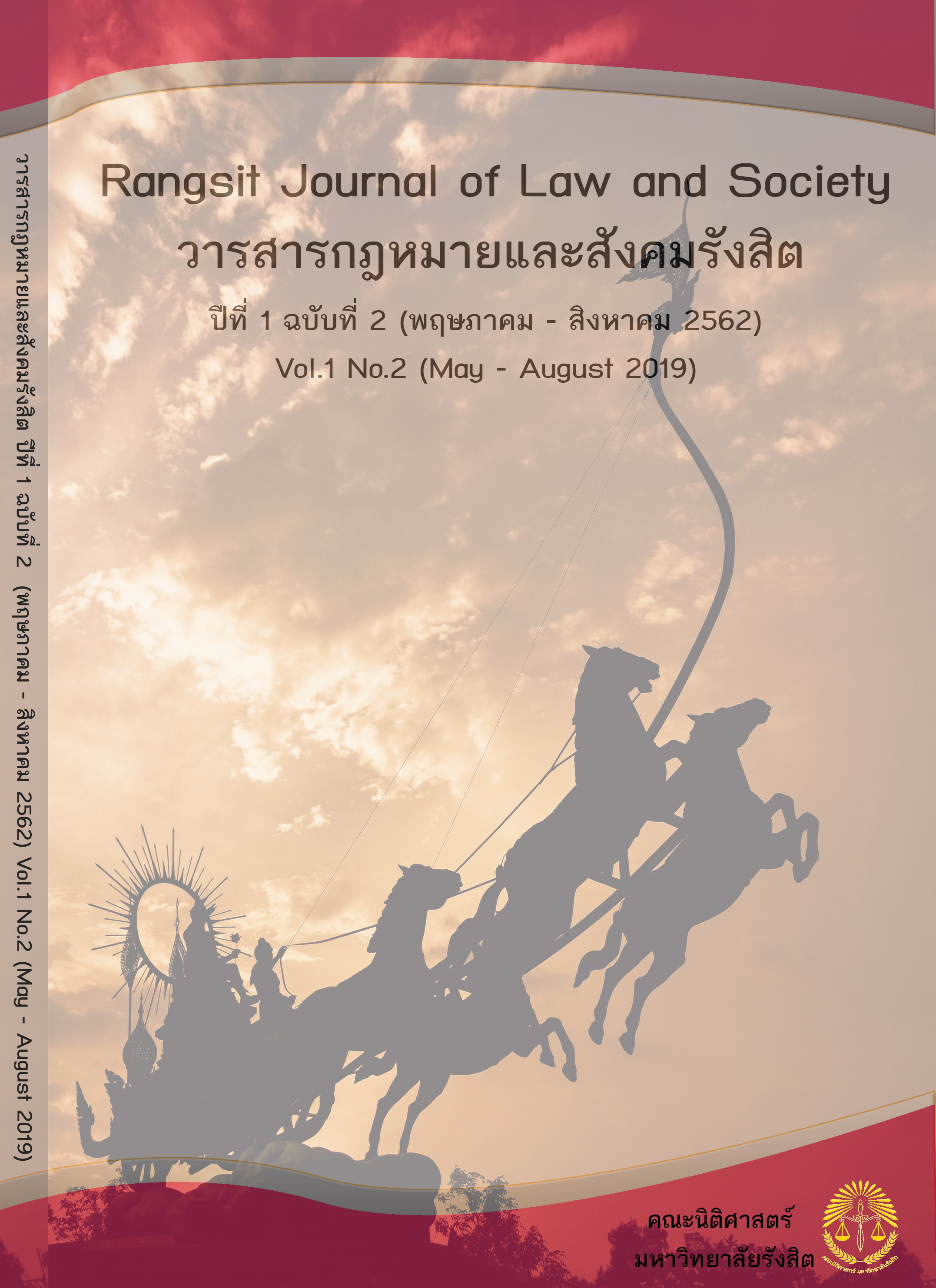การคุ้มครองผู้เสียหายจากการรับบริการทางการแพทย์ประเทศสวีเดน
Main Article Content
บทคัดย่อ
บทความนี้มีวัตถุประสงค์เพื่อการศึกษาแนวทางการพัฒนากฎหมายเพื่อช่วยเหลือเยียวยาผู้ที่ได้รับผลกระทบจากการรับบริการทางการแพทย์ได้อย่างเหมาะสมโดยพิจารณาจากแนวทางของประเทศสวีเดน ปัจจุบันนี้การชดเชยความเสียหายจากการรับบริการทางการแพทย์ของประเทศไทยอยู่ในรูปแบบการพิสูจน์ความผิดแล้วจึงพิสูจน์ความเสียหายตามกฎหมายละเมิดของประมวลกฎหมายแพ่งและพาณิชย์ ผู้ป่วยที่ได้รับความเสียหายทำให้มีผลกระทบต่อการดำรงชีวิตในด้านต่าง ๆ ที่ต้องการค่าชดเชยความเสียหายที่กฎหมายรับรองตามประมวลกฎหมายแพ่งและพาณิชย์ จะต้องเข้าสู่กระบวนการพิจารณาทางศาลและก่อให้เกิดการฟ้องร้อง ต้องมีการพิสูจน์ว่าแพทย์ผิดพลาดอย่างไร การตัดสินว่าแพทย์ขาดความระมัดระวังในการประกอบวิชาชีพเวชกรรมเป็นเรื่องยากเพราะเป็นเรื่องซับซ้อนก่อให้เกิดผลกระทบหลายฝ่าย ผู้เสียหายส่วนใหญ่ไม่ได้รับการช่วยเหลือเยียวยาทันท่วงที อาจจะต้องรอผลถึงชั้นฎีกา การให้มีการจ่ายค่าชดเชยความเสียหายโดยไม่พิสูจน์ความผิดก่อนจะทำให้ผู้ได้รับความเสียหายทางการแพทย์ได้รับการช่วยเหลือเยียวยาแก้ไขปัญหาความเดือดร้อนได้เร็ว และผู้ประกอบวิชาชีพก็ไม่ต้องกังวลใจกับการพิสูจน์ความผิดที่ยาวนาน นอกจากนี้การกำหนดให้ยุติการฟ้องร้องไว้ในกฎหมายบัญญัตินั้นเป็นการจำกัดสิทธิตามบทบัญญัติรัฐธรรมนูญ ซึ่งจะต้องตราเป็นกฎหมาย สำหรับความเสียหายที่จ่ายชดเชยเพียงเป็นกรณีความเสียหายที่สามารถหลีกเลี่ยงได้หรือสามารถป้องกันได้ตามรูปแบบของประเทศสวีเดน เป็นการประกันความเสียหายที่เกิดจากการรับบริการสาธารณสุขซึ่งเป็นแนวคิดแบบรัฐสวัสดิการ การจ่ายค่าชดเชยความเสียหายจากการรับบริการสาธารณสุขโดยไม่พิสูจน์ความผิดเป็นทางออกในการแก้ไขปัญหาการชดเชยความเดือดร้อนเสียหายและการฟ้องร้องทางการแพทย์ได้
Article Details

อนุญาตภายใต้เงื่อนไข Creative Commons Attribution-NonCommercial-NoDerivatives 4.0 International License.
เอกสารอ้างอิง
พระราชบัญญัติหลักประกันสุขภาพแห่งชาติ. (2545). ใน ราชกิจจานุเบกษา เล่มที่ 119 ตอนที่ 116 ก ลงวันที่ 18 พฤศจิกายน 2545 (หน้า 1). กรุงเทพมหานคร: สำนักพิมพ์คณะรัฐมนตรีและราชกิจจานุเบกษา.
Adelman and Westerlund. (2004). The Swedish Patient Compensation System: A Viable Alternative to the U.S. Tort System. Bulletin of The American College of Surgeons, pp. 89(1), 25-30.
Dute J. Faure, G.M., & Koziol, H. (2004). Comparative No-Fault Compensation in the Health Care Sector: Comparative Reports and Conclusions. Austria: Tort and Insurance Law.
Espersson. (2000). The Patient Injury Act: A Comment by Carl Espersson. The Swedish Patient Insurance Association, pp. 1-9.
Glenngård, A.H. et al. (2005). Health systems in transition. World Health Organization 2005, pp. xiii-3.
Hoffman, S. Z. (2009). No-Fault Solutions to the Problem of Medical Injuries: A Focus on Sweden as a Model. Annals of Health Law Advance Directive, 18, 73-93.
National Social Insurance Office. (2003). Social Insurance; General Information about Social Insurance (brochure). Retrieved from Social Insurance in Cyprus: http://www.mlsi.gov.cy/mlsi/sid/sidv2.nsf/All/CFC7F0DD3FCB4E94C2257A170036EE4D?OpenDocument
Studdert and Brennan. (2001). No-fault compensation for medical injuries: The prospect for error prevention. JAMA, 286(2), 217-223.
Swedish Institute. (2009). Health Care in Sweden. Retrieved from Si.Svenska institutet: http://www.si.se
The Patient Injury Act 1996. (2002). Medical Malpractice Systems around the Globe: Examples from the US- tort liability system and the Sweden- no fault system Health. USA: The World Bank Group.

